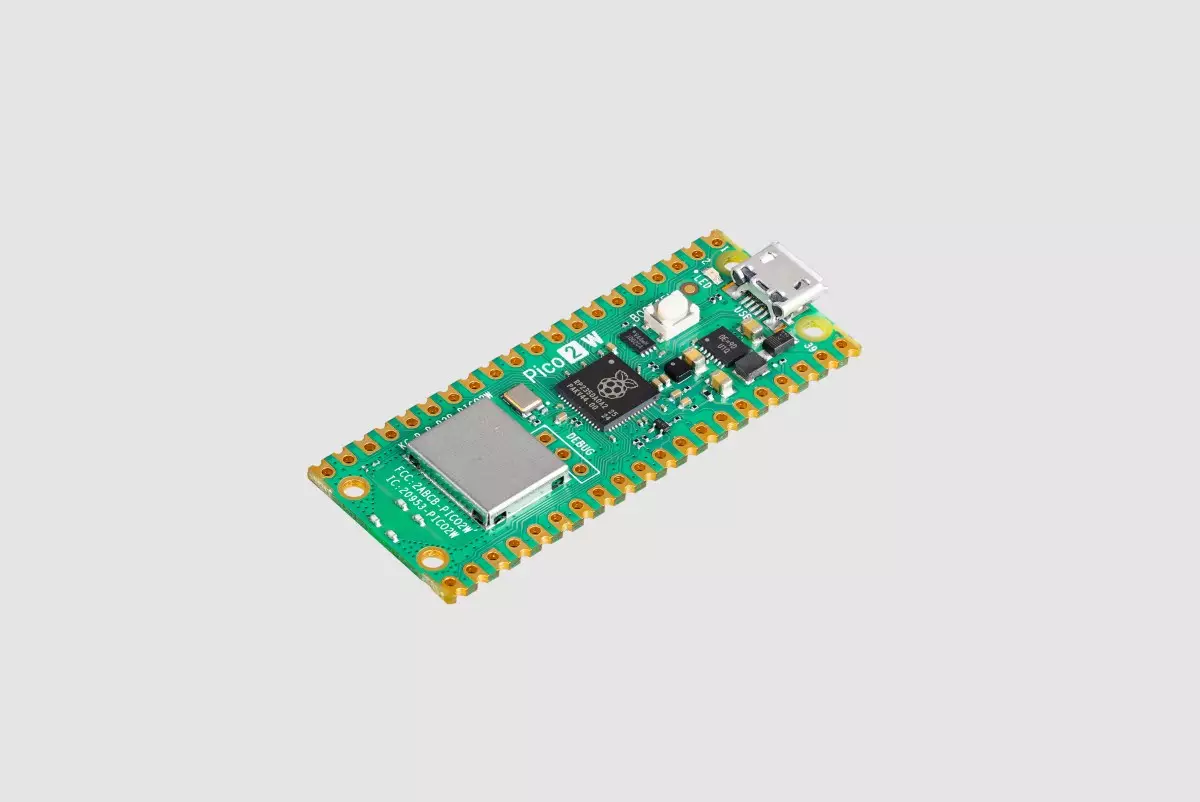The world of electronics and DIY projects has witnessed a dramatic revolution over the past two decades, with microcontrollers taking center stage as the backbone of many innovative hardware developments. One of the latest entries in this landscape is the Raspberry Pi Pico 2 W, an upgrade to its predecessor that is aimed at hobbyists and professionals alike. In this article, we will delve into the intricacies of the Pico 2 W, exploring its architecture, capabilities, and relevance in the broader context of the electronics market.
Microcontrollers are compact integrated circuits designed to govern specific tasks in electronic systems, enabling them to perform dedicated functions without the overhead of a full operating system. While typical Raspberry Pi models offer a general-purpose platform suitable for diverse applications—including media streaming, web hosting, and programming—microcontrollers like the Pico 2 W focus primarily on interfacing with various peripherals, sensors, and actuators. This specialization makes them an excellent choice for embedded systems and hardware customization projects.
The Pico 2 W harnesses the newly developed RP2350 microcontroller from Raspberry Pi, which has garnered a reputation for being well-documented and easy to program. With a small form factor and excellent power efficiency, the Pico 2 W allows creators to build and scale their projects without worrying about high energy consumption or bulky hardware.
At the heart of the Pico 2 W is a dual-core processor capable of operating at 150MHz. Users have the flexibility to choose between Arm Cortex-M33 cores, which dominate the microcontroller landscape due to their efficiency, or the emerging Hazard 3 RISC-V cores, appealing for those inclined towards open-source architectures. This architectural choice is significant, as it allows developers to select the most suitable core for their specific applications without being locked into a fixed configuration.
Equipped with 4 MB of onboard flash memory for storing code and an additional 520 KB of SRAM, the Pico 2 W is designed to accommodate various software applications while remaining compact. Despite its capabilities, it is essential to remember that this microcontroller is not built for heavy computing tasks; rather, it excels in its intended role in controlling other devices.
One of the standout features of the Pico 2 W is its wireless communication capabilities. Supporting both Wi-Fi (802.11n) and Bluetooth 5.2, this microcontroller makes it possible to develop connected projects—an increasingly vital aspect in the era of the Internet of Things (IoT). However, some users may express disappointment over the absence of 5GHz Wi-Fi support, which could have added further versatility to the platform. That said, for those who do not require wireless features, Raspberry Pi continues to offer a more affordable option in the form of the Pico 2 model, devoid of wireless capabilities.
The adaptability of the Pico 2 W caters to a diverse audience, from hobbyists embarking on their first electronics endeavor to industrial deployments where robust hardware handling is crucial. As Raspberry Pi continues to gain traction in sectors like electronics manufacturing, it becomes increasingly clear that products like the Pico 2 W fulfill a growing demand for reliable, scalable microcontroller solutions.
Raspberry Pi has firmly established itself as a formidable player in both the consumer and industrial electronics space. The transition to becoming a public company marks a critical juncture in its trajectory, especially as it revealed that a staggering 72% of its sales stem from industrial and embedded applications. The ability to purchase Pico boards individually or in bulk reinforces Raspberry Pi’s commitment to both DIY enthusiasts and professional developers who might require large quantities for project deployment.
The Raspberry Pi Pico 2 W stands as a testament to the evolution of embedded systems, offering a mix of features that cater to both entry-level users and seasoned engineers. Its design ethos encourages creativity and exploration, both of which are essential in a time when technological advancements are accelerating rapidly. As we look ahead, one can only speculate on the potential enhancements and capabilities that could emerge in future versions, paving the way for even greater innovations in the realm of microcontroller technology.

